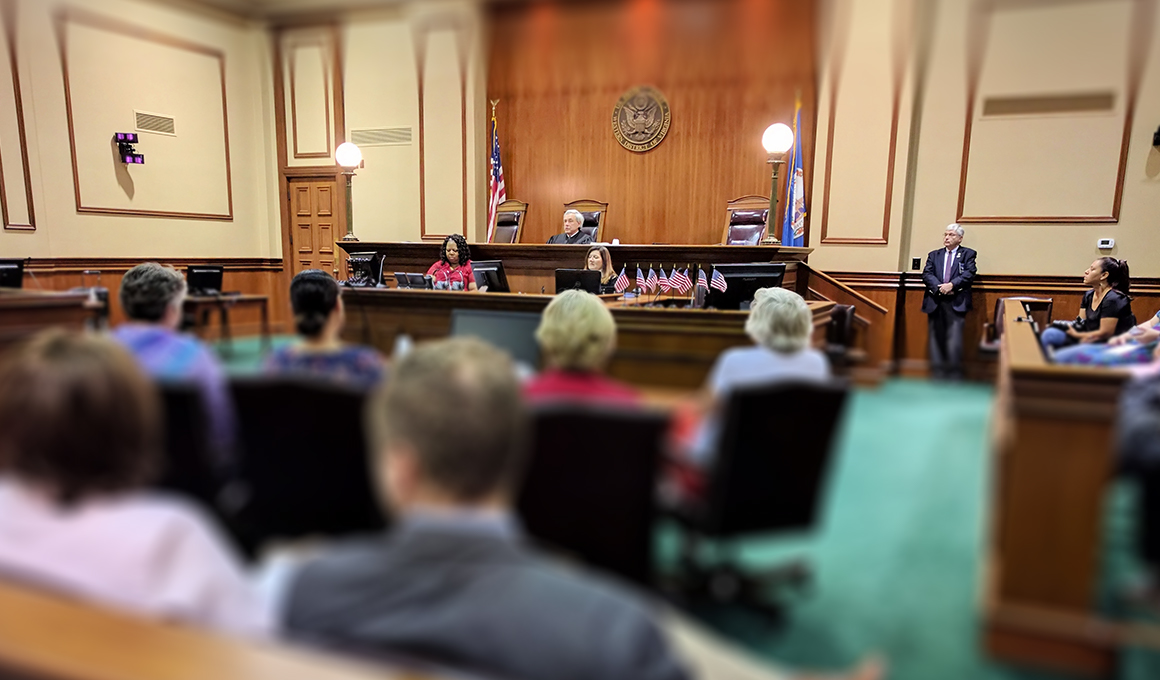Just How Trial Presentations Enhance Your Argument and Persuade Jurors
Trial presentations act as a crucial mechanism for boosting legal disagreements and convincing jurors. By incorporating visual help, narrative structures, and emotional interaction, lawyers can develop an engaging case that resonates on several levels. The strategic usage of visuals not just makes clear complex info but additionally catches jurors' interest better than words alone. The art of narration plays a just as crucial duty in changing valid proof right into a compelling story, forming jurors' understandings. Comprehending these aspects can substantially influence test end results, increasing the inquiry of just how each component adds to this detailed dynamic.

Value of Aesthetic Aids
Visual help play a crucial role in improving the effectiveness of test discussions, as they can significantly boost target market interaction and retention of info. In the context of a test, where jurors are charged with handling facility information, visual aids serve to simplify and make clear key points. Graphes, charts, and pictures can convey information and principles that may or else overwhelm or puzzle jurors, enabling a much more simple understanding of the proof presented.
Moreover, visual aids help in keeping juror interest throughout the process. By breaking the monotony of verbal statement, these tools can stress critical debates, making them much more remarkable. Effective visual help can also evoke emotional actions, which can be essential in encouraging jurors to align with the presenter's narrative.

Crafting Compelling Stories
A compelling narrative is important in trial presentations, as it acts as the backbone of effective persuasion. It enables attorneys to weave together truths, evidence, and emotional aspects right into a meaningful story that resonates with jurors. This narrative framework enables jurors to understand the intricacies of the situation while assisting them through the attorney's debate.
To craft a compelling story, attorneys need to concentrate on clarity and comprehensibility. In addition, the use of vivid summaries can create mental images that assist jurors picture the events, making the story extra unforgettable.
Additionally, incorporating key themes throughout the discussion reinforces the core message and aids in retention - trial presentations. The narrative ought to not just share info however likewise stimulate a feeling of justice, highlighting the stakes entailed. Inevitably, a well-constructed story fosters a link in between the jurors and the instance, placing the attorney's debate as both qualified and compelling, therefore enhancing the chance of a desirable verdict

Engaging the Jury Mentally
Reliable court engagement rests on the attorney's ability to get in touch with jurors on a psychological level. This link can substantially affect jurors' understandings and their supreme decision-making. Making use of psychological appeals enables lawyers to humanize the case, transforming abstract legal concepts into find more info relatable experiences. By providing real-life stories or endorsements, attorneys can evoke empathy and compassion, click here now fostering a deeper understanding of the concerns at risk.
Aesthetic help, such as photos or videos, can further enhance psychological engagement, giving jurors with vivid depictions of the situation's human elements. Crafting a narrative that highlights the battles and accomplishments of the people involved makes sure that jurors see past the legal disagreements and recognize the human repercussions of their choices.
Moreover, tone and body movement play an essential duty in communicating feeling. An attorney's passionate distribution can reverberate with jurors, strengthening their emotional investment in the case. It's vital to balance psychological appeals with valid evidence, guaranteeing that jurors really feel obliged to act while remaining based in the reality. Inevitably, a psychologically engaged court is more probable to be convinced, making emotional connection a crucial component of effective test discussions.
Structuring Your Presentation

The body of the presentation need to be practically segmented into essential points, each supported by engaging proof. It is advantageous to utilize storytelling techniques to weave facts right into a narrative that jurors can easily adhere to. Aesthetic aids, such as charts and videos, can enhance comprehension and involvement, assisting to highlight crucial pieces of proof.
Real-World Study
Checking out real-world instance researches supplies very useful understandings right into the art of trial presentations and persuasion. The defense group successfully employed a method that integrated high-profile expert testimonies with multimedia presentations, which mesmerized jurors and ultimately influenced their choice.
Another remarkable example is the "McDonald's Coffee Situation," where the plaintiff's attorneys utilized graphic pictures of the injuries suffered by Stella Liebeck. trial presentations. This stark aesthetic evidence played a vital duty in sharing the extent of her burns, leading to a substantial jury honor. Such cases demonstrate that impactful trial presentations usually depend upon the efficient combination Continue of visuals and storytelling to evoke psychological responses from jurors
Moreover, the "Casey Anthony Test" highlighted the importance of narrative comprehensibility and trustworthiness. The prosecution's failure to establish a compelling timeline reduced their persuasive power, underscoring the requirement of a well-structured discussion. Analyzing these cases exposes that effective test discussions require tactical planning, emotional interaction, and the capacity to resonate with jurors' values and ideas.
Conclusion
Test discussions considerably improve disagreements and encourage jurors via the calculated usage of aesthetic help, compelling stories, and emotional interaction. By simplifying complex information and cultivating links with the target market, these aspects produce a memorable and impactful experience. A well-structured discussion balances psychological appeals with accurate proof, inevitably resonating with jurors' values. The assimilation of these methods not just influences decision-making yet additionally emphasizes the significance of effective interaction in the court room.